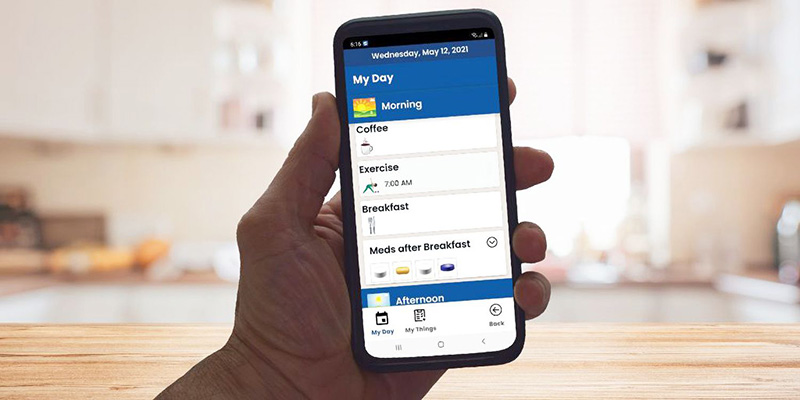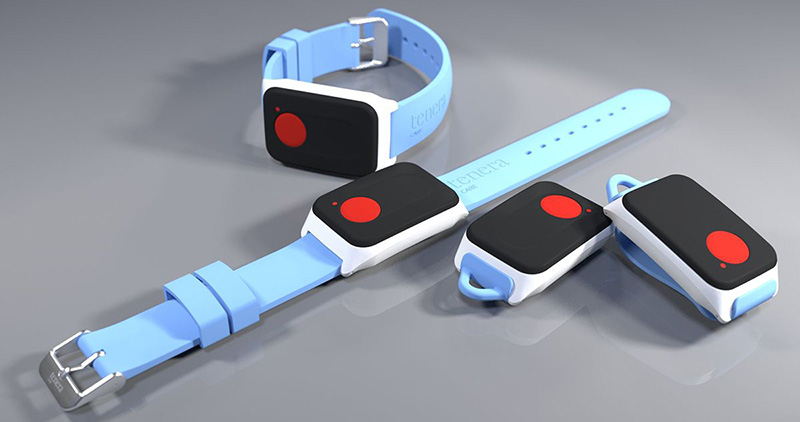AGE-WELL, Canada’s technology and aging network, accelerates the delivery of technologies that benefit older adults and caregivers.
After a massive stroke in 2008, Paul Lea was diagnosed with vascular dementia. Today, he lives independently, spends time with his friends and his daughter, writes, and does public speaking as an advocate for people with dementia. He credits technology with helping him to continue to “live well.”

Photo credit: John Hryniuk.
Lea, 69, says that due to short-term memory issues, he would sometimes forget to take his medications. These days, it’s a lot easier, thanks to a new app, MAXminder™, which reminds older adults with mild cognitive impairment to take their medications and assists with scheduling daily activities.
The app is coming to market with support from AGE-WELL, a federally-funded Network of Centres of Excellence. For the last six years, AGE-WELL has served as a catalyst for technological innovation that supports healthy aging, while propelling forward Canada’s AgeTech sector. AGE-WELL includes more than 250 researchers at 46 universities and research centres across Canada, over 1,000 trainees, and more than 400 industry, government, and non-profit partners. Approximately 5,000 older adults and caregivers are involved. AGE-WELL supports 56 Canadian startups that are commercializing and launching AgeTech products.

Lea was among the first users of the MAXminderTM app, developed by researcher Dr. Jeff Jutai and Dinis Cabral, CEO of JLG Solutions. Lea provided feedback while MAX was in development. He especially loves the pop-up notifications that remind him to take his 11 medications at different times throughout the day. Lea also uses the app to remind him to eat lunch, which is especially important because he has diabetes. His daughter has the app, too. It provides her with information on how Lea is doing, connecting her to his scheduling and medication routine.
AgeTech is essential to the future of aging
“It’s really helpful for me and I think it would help any senior who may forget sometimes to take their medication,” says Lea, who also has a virtual home assistant. “I live well because of technology, which allows me to continue to do things I enjoy and that are important to me.”

Managing Director & COO, AGE-WELL
To support older adults like Lea, AGE-WELL brings everyone together to solidify Canada’s leadership in AgeTech — benefiting seniors and caregivers, and contributing to Canada’s economic recovery. Bridgette Murphy, Managing Director and COO of AGE-WELL, says that the COVID-19 crisis has “significantly increased” the use of many technologies and online services among older Canadians.
“The pandemic has underscored the important role that technology can play in supporting older adults to stay independent, active, and connected,” says Murphy. “It has also highlighted gaps in care and services for older adults, where technology can make a big difference.”
I live well because of technology, which allows me to continue to do things I enjoy and that are important to me.
Paul Lea
Driving the growth of Canada’s AgeTech sector
Across AGE-WELL, more than 120 technologies, services, policies, and practices are in development — or already making a difference in people’s lives. These innovations include smart home sensors, remote therapies, virtual exercise programs, and systems that connect people.
AgeTech solutions can also enhance the quality of life and safety for people who live in long-term care, and ease stresses on staff so they can spend more time one-on-one with residents. One example among many: a wearable device developed by Tenera Care that alerts staff if a resident falls or goes into the wrong room.

Eight Challenge Areas drive AGE-WELL’s research and innovation in supporting older adults and caregivers, and achieving social and economic impact. AGE-WELL also applies itself to issues of equity, access, and affordability.
Murphy says that the involvement of older adults and caregivers is key to ensuring that technologies are user-friendly and practical. “Everything we do starts with the needs of older adults and caregivers and co-developing a technology or service to meet that need,” she says. “It’s all geared toward supporting quality of life and independence, and helping older adults remain in the setting of their choice as long as possible and connected with health care providers, their community, and their loved ones.”



